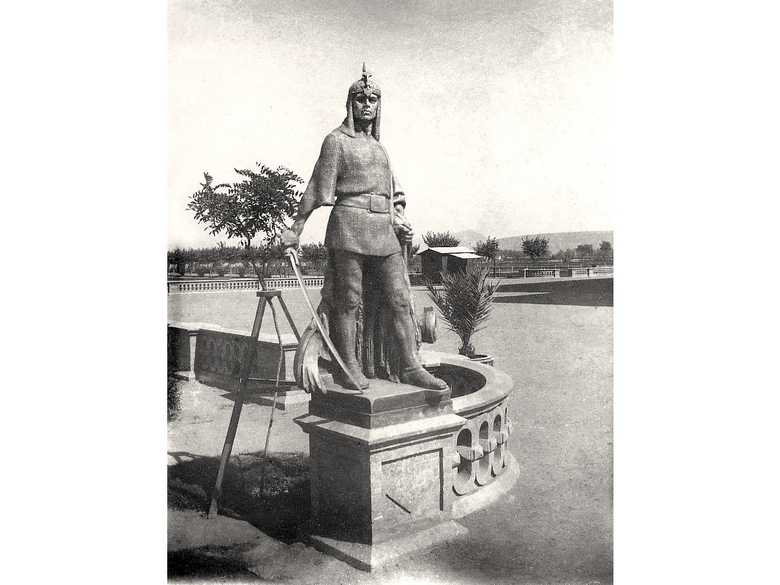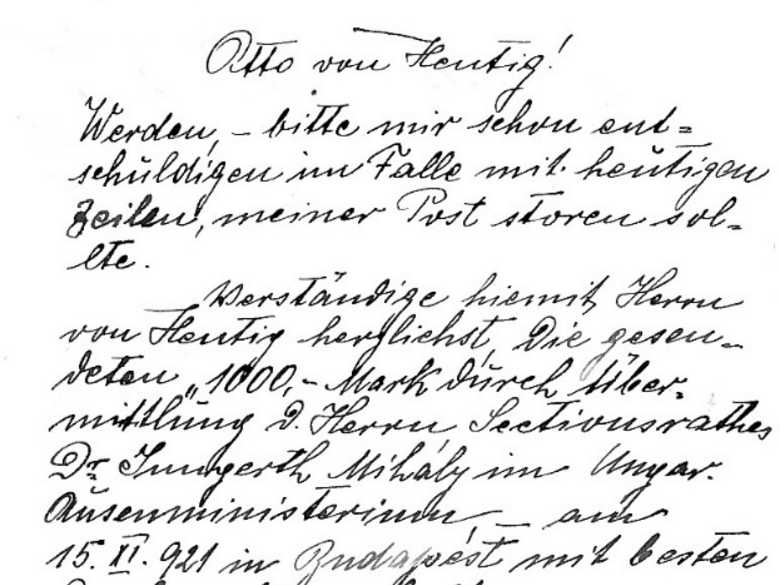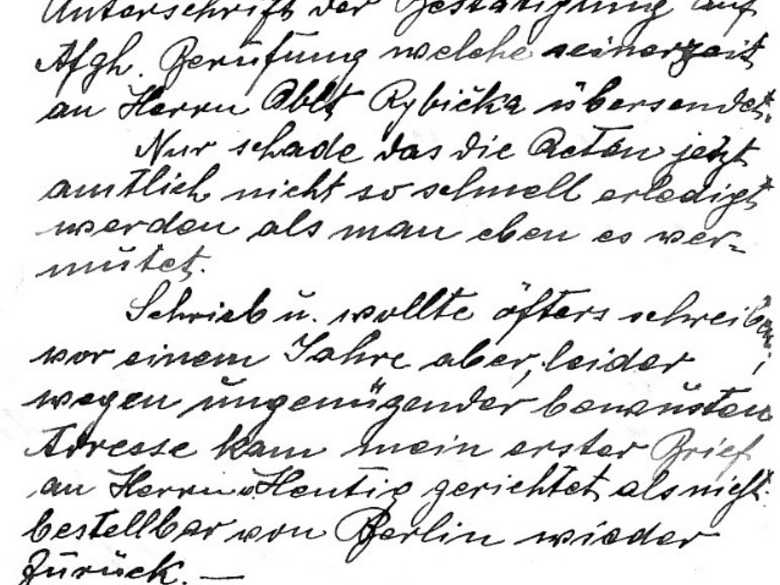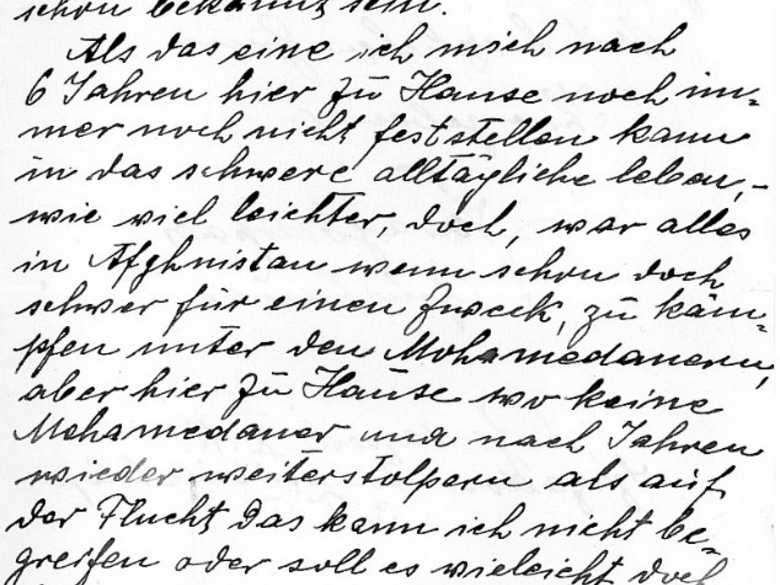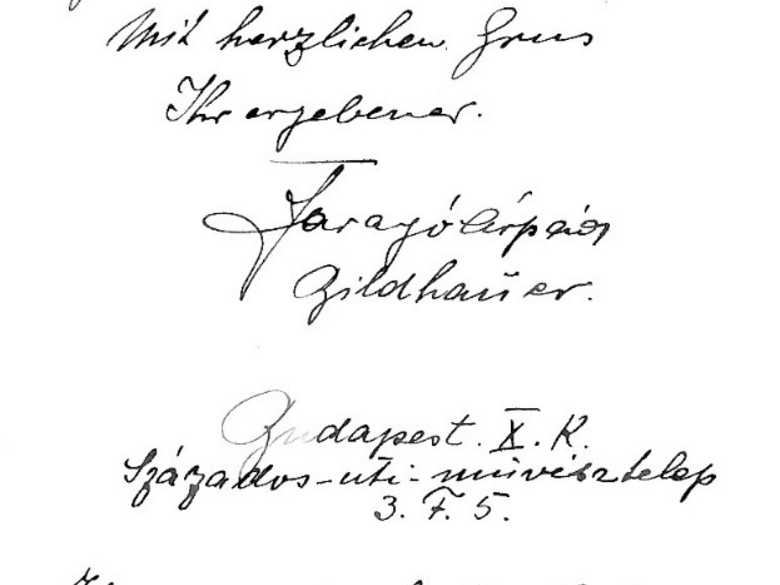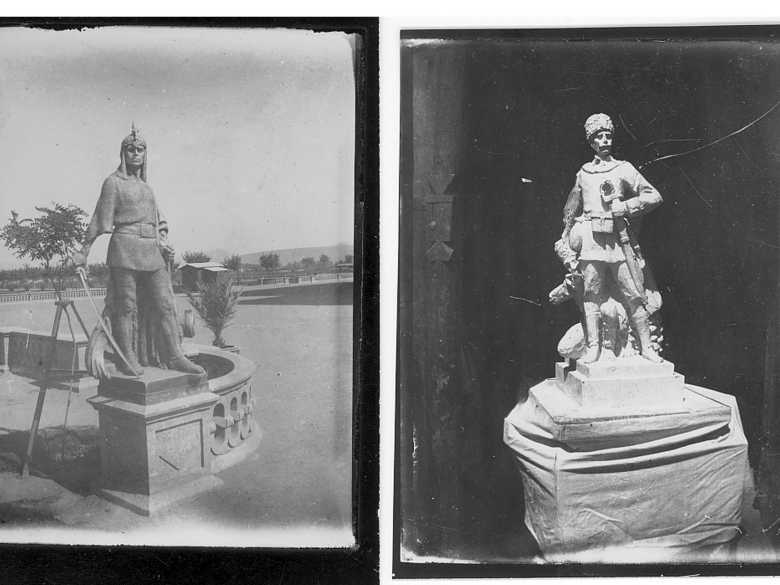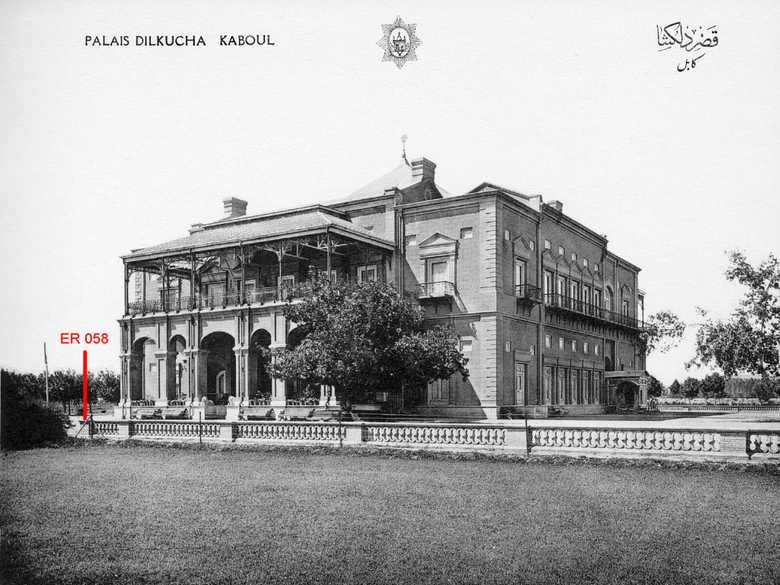ER 058 — Statue vor dem delkusha-Palast
Diese Aufnahme stammt nicht aus der Sammlung von Emil Rybitschka, sondern wurde 1921 von Farago einem Brief an W.O. von Hentig beigelegt. Sie zeigt einen aufrecht stehenden Krieger im Ketten-Panzer mit Helm und gezogenem Schwert. Die Statue steht auf einem Pfeiler der Einfassung des Delkusha-Palastes. Möglicherweise ist dies eine Kopie des Bildes, das auf dem Albumblatt in der Sammlung Rybitschka fehlt. ♦♦♦ This photograph is missing in the Rybitschka Collection. It was sent by Farago with a l...
ER 058-2 Der Brief von Arpad Farago an Werner Otto von Hentig vom 18. Nov. 1921, dem zwei Bilder beigelegt waren: Seite 1
Diese Aufnahme stammt nicht aus der Sammlung von Emil Rybitschka, sondern wurde 1921 von Farago einem Brief an W.O. von Hentig beigelegt. Sie zeigt einen aufrecht stehenden Krieger im Ketten-Panzer mit Helm und gezogenem Schwert. Die Statue steht auf einem Pfeiler der Einfassung des Delkusha-Palastes. Möglicherweise ist dies eine Kopie des Bildes, das auf dem Albumblatt in der Sammlung Rybitschka fehlt.
♦♦♦
This photograph is missing in the Rybitschka Collection. It was sent by Farago with a letter to the German diplomat Werner Otto von Hentig in 1921. It shows another one of Farago’s larger-than-life hero figures placed on a plinth of the enclosure of the new Delkusha Palace.
[Foto, verso:] V/58
- Rybitschka-Album, Bild-Nummern: ER 058-1 = 73 b; ER 058-6 = 73 b + 73 a.
- Souvenir d’Afghanistan (1927), Serie 2, Tafel SdA 2-03: Der Delkusha Palast und seine Einfassung.
- Collection Principessa Nives Ruffo della Scaletta, No. 28: Dieselbe Statue am Fuss des Unabhängigkeits-Denkmals.
- R.D. McChesney ; M.M. Khorrami [Eds.] (2016) : The history of Afghanistan, Fayz Muhammad Katib Hazarah’s Siraj al-tawarikh, Vol. 4, Part 4, p. 1373-4 : «A number of Austrian regular army soldiers who had been prisoners of war and been freed had come to Afghanistan (from Russian prisoner-of-war camps) and were employed in some of the government buildings and in various capacities. (One of them) sculptured two statues on square plinths (flanking) the gate of the Dilkusha Palace. These statues held unsheathed swords in their hands and stood atop cannons. They aroused those who saw them to go and fight and they made the unsheathed swords an effective symbol of courage and combativeness. In the end, at the order of Amir Aman Allah Khan, these two statues were moved to the edge of the independence Monument (the minaret commemorating the gaining of independence in 1919) located in the middle of the avenue to the south of the Ministry of War and erected there. One night they were smashed by people who considered them idols. …”
Image No.
ER 058
Collection
Emil Rybitschka, Afghanistan 1915-1920
Series
ER 056-066, Bildhauer Arpad Farago
Format
Originalabzug, 105/79 mm
Quality
sehr gut, leicht verblasst
Place, date
Kabul, 1918/19
Descriptors
Latitude / Longitude34.526372 / 69.181471
Google Earth34°31'34.9"N 69°10'53.3"E / 1800 müM
Google Mapshttps://maps.google.com
Zoom Earthhttps://zoom.earth
You know more about this picture?


